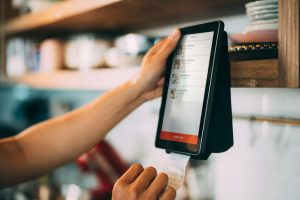It’s 2025 now, and you’re probably thinking about making an app for your phone, specifically an Android one. That’s a pretty common thought for a lot of people, actually, because pretty much everyone has one of those devices in their pocket these days. And getting your own app out there for others to see? Well, that can be a really neat thing to do, I think.
You might be thinking, “Where do I even begin with all that stuff?” Or, “Is it really something I can do myself without being some kind of super coder?” The good news, usually, is that while it takes some effort and learning, it is definitely something that is within reach for many individuals. Even if you’re just starting out, it’s possible to do, you know.
It’s not some big, secret thing that only a select few people can understand, normally. It just feels like that sometimes when you first look at it. This whole process, building a mobile application, it has steps. Like any other project you might take on, you just kind of follow the path, one thing after another, that’s how it normally goes.
From the initial idea rattling around in your head, maybe when you’re just sitting there, to actually seeing it run on someone else’s phone, there are a bunch of things you gotta do. It might seem like a lot to handle all at once, but we can talk through it, alright? We can break it all down into smaller bits.
And hey, Android apps are super popular, which is part of the draw. There are so many phones that run Android, all sorts of different brands, which means your app could, hypothetically, reach a whole bunch of people. So that’s certainly a good starting point, to think about it this way before you even begin anything else.
Getting Your Ideas All Together
This first bit, it is probably the most important part, actually, before you write any code or draw anything fancy. You gotta figure out, properly, what your app is actually supposed to do for folks. What specific problem is it solving for people, or what cool new thing does it let them achieve? Like, seriously, spend some time thinking about that question.
You really should make a list of absolutely everything you can think of. Think about who is really going to use it, what sorts of things they might need from it, and perhaps what makes your particular idea a little bit different than other applications that are already out there right now. It’s a good idea to write down all these thoughts, like a messy brainstorm you know, just get them out.
After you get all those thoughts down on paper or in a document, it’s a good plan to try and refine them a little, you know, make them a bit clearer. Maybe sketch out some basic screens on paper, just rough, rough ideas of what it might look like, how it would flow from one screen to the next. This really helps you kind of visualize the user experience, what they’ll click, and what happens next. This is considered to be a big step in the whole operation.
This whole early stage, the conceptualizing of your app, it honestly helps you solidify what your app is actually supposed to be. Without a pretty clear picture here at the very beginning, the rest of the project can get real messy, real fast, becoming quite disorganized. So, normally, you should take your time here. Don’t rush this specific part at all, give it the attention it deserves, that is for sure.
Sometimes it’s even useful to talk to a few potential users at this point. Just informally ask them what they might want in an app like yours. Their input can really shape your idea and help it be more useful for the actual people who will download it. It really makes a difference to hear from others.
Making It Look Good (And Easy to Use)
Once you have a pretty decent idea of what your app does, after all that thinking, you then need to really think about how it’s going to look and, just as importantly, how it’s going to feel when people are actually using it. This is usually called “design,” like User Interface (UI) and User Experience (UX) stuff, these particular terms are used a lot in this field.
You really need to think about the colors you’ll use, the fonts, where all the buttons are going to be placed on the screen, and how easy it is for someone to find what they are looking for without getting all frustrated. A good design, a well-thought-out one, makes people want to keep using your app, which is a pretty important detail for how successful it might be in the long run.
It is really important that the app just makes sense to people when they first open it up. Like, if they tap a button, they expect something logical to happen that makes sense given the context. If it’s confusing to navigate or just plain ugly to look at, people will just delete it, typically, and quickly forget about it, which nobody wants after all that work. So you truly need to spend some proper time making it look nice and function clearly.
There are tools out there for designing your app’s appearance and flow, like Figma or Adobe XD, that really help you create mockups and prototypes. These are like fake versions of your app that you can actually click through to see how it works and feels before you even write one line of actual code. It’s a good way to test things out before you commit, saving a bit of effort later on, generally speaking.
Even simple sketches on paper can help a lot. Don’t feel like you need fancy software right away for this stage. The main thing is to plan out the user’s journey through your app, making sure it feels smooth and intuitive. That’s usually the most important goal for any good design, really, to keep people happy.
The Actual Building Part: Coding Time!
Alright, so now you’ve got your plan all straightened out and your designs are looking neat and tidy, ready to go. Now comes the real heavy lifting, the part that many people think of when they hear “app development”: actually building the app itself. For Android, you’re usually talking about using a couple of main programming languages.
Most commonly, these languages are Kotlin or Java. Kotlin is kind of the newer favorite, many people would say it is more modern and easier to work with, offering a bit more flexibility, but Java has been around forever and there’s tons and tons of stuff written in it, so it’s not going anywhere soon. You will also use Android Studio, which is the official tool that Google actually makes for building Android apps.
It’s a big program, Android Studio is, and it has all the bits and pieces, all the tools and settings, you generally need to make an app. You write your code in there, you test it out on various settings, and generally you put it all together there. It might feel a bit intimidating at first, you know, with all the buttons and windows and different panels. But you get used to it over time.
You’ll be writing code for all the different functions your app needs to perform, everything from showing text to taking pictures. Like, if it needs to connect to the internet to grab some data, or save something on the phone’s storage, or show a list of things from a database. Each of those features, each individual action, requires code to make it work correctly, usually. This takes some getting used to and a bit of learning, definitely, it is a big part.
As you build, it is usually a good idea to test your app on different devices or emulators, those fake phones on your computer. This way you can see if things look right and act right on various screen sizes and Android versions, ensuring a wider reach. It saves a lot of headaches later on if you catch issues early, that is for sure.
Sometimes, if you get stuck on a tricky part, or if the project is really big and becoming too much for one person, it might make sense to get some outside help. Businesses specializing in app creation, for example, like those offering Mobile app development Houston services, they can certainly come in handy when you need some proper outside assistance, you know, to move things along.
Getting It Ready for the World (and the Play Store)
Once your app is built, and you’ve tested it quite a bit to make sure it mostly works and doesn’t crash every five minutes, you’re not quite done with the whole thing. There’s still the process of getting it polished up and truly ready for everyone to download from the Google Play Store. This particular part, it has its own set of things that you gotta remember and do right.
First, you normally need to fix all those little bugs, those unexpected glitches and errors that tend to pop up when people use your app in ways you didn’t anticipate. Testing is a constant thing, it’s never really finished. You test, you find problems, you fix them, and then you test again. This cycle just keeps going until the app is mostly stable and reliable, normally, that is the general process.
Then, you gotta get ready for the Google Play Store itself. This means preparing things like really good screenshots of your app, a solid description that clearly tells people what it does and why they should care, and making sure it meets all of Google’s rules and guidelines. There are usually many rules and specifications that you have to follow, it’s quite a list, honestly.
You’ll definitely need a Google Developer account, which does cost a small fee one time, usually around twenty-five bucks, or something like that. After that, you can upload your app’s compiled file, normally an APK or AAB file, along with all the descriptions and pictures. Then you submit it for review by Google’s team. This is a waiting game, normally.
Google actually reviews every single app submitted to make sure it’s safe and follows all their policies for app quality and content. This can take a few days, sometimes more than that, depending on what’s going on with their review queue. Once it’s approved, your app will be live on the Play Store, and people all over the place can finally find it and download it to their phones! It’s a pretty good feeling, seeing it live.
What Happens After Launching Your App
So, your app is out there for everyone to see! People are downloading it, which is a pretty cool feeling, honestly, seeing numbers go up. But just because it’s live on the store doesn’t mean your work is totally done for good. Actually, in many ways, it’s just the start of another phase, a continuous sort of thing, like a journey you might say.
You’ll probably start getting feedback from users, which is a big deal. They might find new bugs you somehow missed, or suggest new features they’d really like to see added. It’s important to really listen to this feedback, because it tells you what people actually want and what needs fixing to make the app better for them. This is how apps grow and improve, generally.
Because of this constant flow of feedback, you’ll typically be releasing updates for your app. These updates might fix those new bugs that were reported, add those new features that users asked for, or maybe just make the app run a little bit better and smoother overall. Keeping your app fresh and updated often makes people want to keep it on their phone and use it more regularly.
Also, it’s a really good idea to keep an eye on how your app is doing in terms of downloads and how much users are actually using it, their engagement. Google normally provides some tools right in your developer console that show you this sort of data, what people are doing within your app. It really helps you understand your users and make smart choices for the future.
So, really, launching an app is not the end point but a sort of beginning to a new cycle. It’s a continuous loop of listening, improving, and then releasing new versions of your app. That’s just generally how app development works, you know, it just keeps going on and on for as long as people are using it, or you want to support it. It’s a living project.
Frequently Asked Questions (FAQ) About Android App Building
Is it really hard to make an Android app if I’m a beginner?
Well, it depends a bit on what you mean by “hard,” you know? It definitely takes time and some effort to learn the coding bits and how Android Studio works. But there are tons of tutorials and resources out there, so it’s certainly doable for beginners if you stick with it. Don’t expect to make Facebook on your first try, though.
What’s the best programming language for Android apps in 2025?
Generally speaking, Kotlin is probably the go-to language for new Android apps these days. It’s a bit more modern and, many people say, easier to read and write than Java. Java is still totally fine and widely used, but Kotlin usually gets recommended for folks just starting out now, as it’s quite popular.
How much money does it cost to get an app on the Google Play Store?
You will typically need to pay a one-time registration fee for a Google Developer account, which usually costs about $25. This lets you publish multiple apps. Besides that fee, any costs would generally come from software you might choose to buy, or if you hire people to help with design or coding, like getting some Mobile app development Houston assistance.
Can I make money with my Android app after I launch it?
Yeah, you generally can! There are different ways, like showing ads in your app, or having in-app purchases where users buy extra features or content. You could also make it a paid app from the start, but that’s less common. It really just depends on your app and what makes sense for your users and what they might like.
How long does it usually take to make a simple Android app?
Oh man, that’s a tough one to say exactly, because “simple” means different things to different people. If you’re learning from scratch and building a very basic app, it could take anywhere from a few weeks to a few months of consistent effort. More complex apps, obviously, take much, much longer, even years for big projects. It’s a journey, not a sprint.










